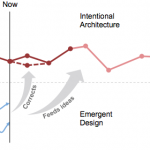The Personality Types of UX: Searchers & Browsers
When it comes to navigating a website by browsing (menus) or searching (search bar), it turns out that the two strategies are not created equal. But that doesn’t mean we should ditch one. Shockingly, this is a situation where the lesser-used item is still as valuable as the more popular choice.
The menu and search bar are the two go-tos for navigating most web content. But who’s going to reach for the menu, and who’s going to reach for the search bar? And once we figure that out, how can we design user interfaces that care well for the needs of these users?
This leads to a related question: What makes a user a browser, someone who’s mouse migrates to the menu? Alternatively, what makes someone a searcher, preferring to head straight to the search bar to find one specific thing?
To create a solid experience, we need to understand the circumstances that might make most of your users want to browse, or most of your users want to search.
In the end, the important take away is that both navigation and search have a vital role to play in web navigation. Aneta Chodor-Kjeldsen, Lead Frontend Developer at Cludo ApS points out on the Cludo blog that “web owners very often underestimate the power of the search box or, on the other hand, think that placing a search box on their page will solve all UX navigation issues and challenges.” It’s important that we, instead, understand the strengths and weaknesses of both.
For searchers:
- Make sure you can easily search from any page on the website
- Predictive input reduces your likelihood of every performing a search with no results
- Make use of autocomplete to speed up search results
- Be gentle with spelling errors
- Take the time to study your search data and make changes accordingly
For browsers:
- Limit the use of “hamburger menus”
- Keep your menu in a standard location (read: the top of the screen)
- Sticky menus are 22% quicker to navigate and are preferred by 100% of users
- And make sure to optimize your menu order








No Comments on this Post.Be the first